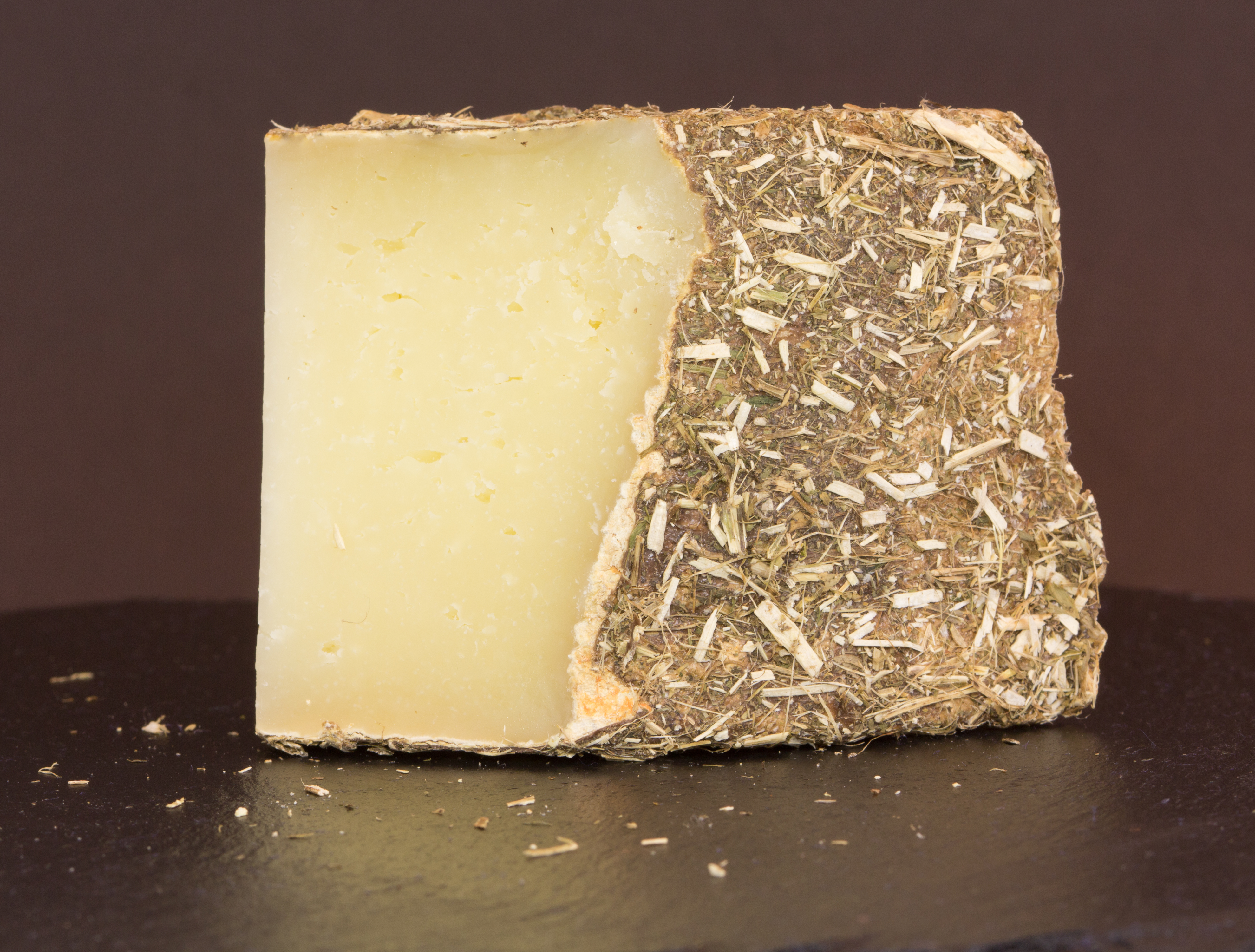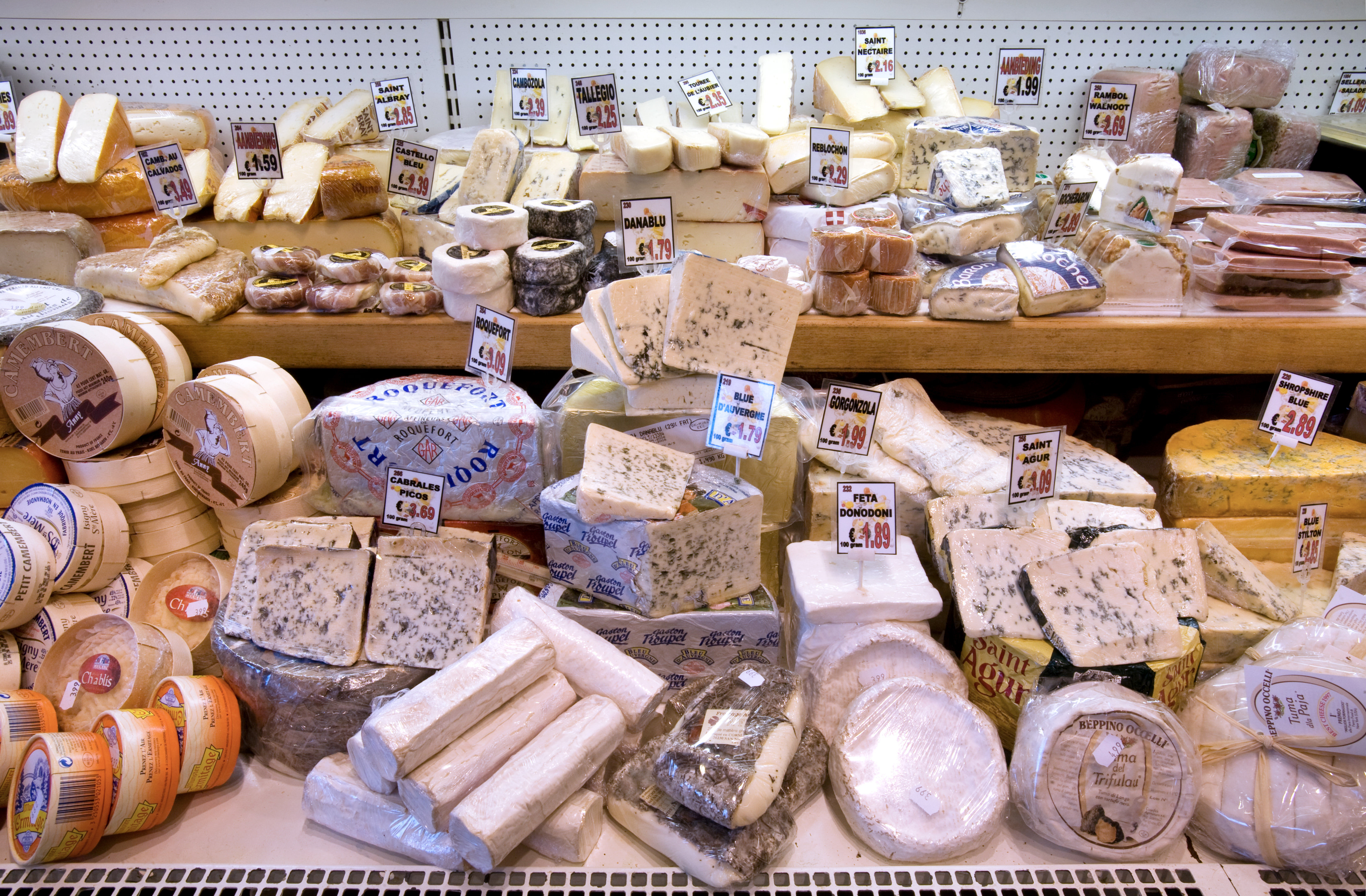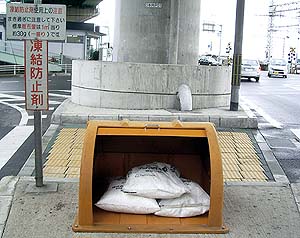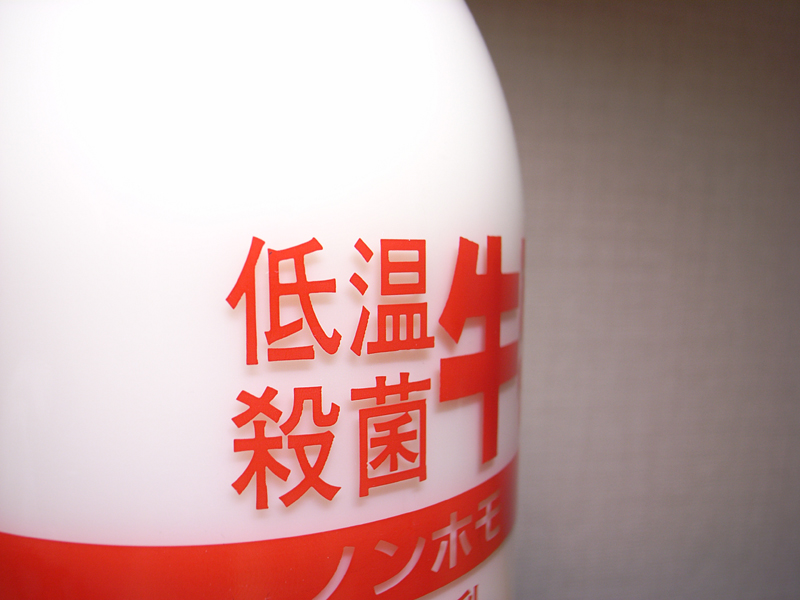|
Granular Cheese
Granular cheese, also known as stirred curd cheese and hard cheese, is a type of cheese produced by repeatedly stirring and draining a mixture of curd and whey. It can refer to a wide variety of cheeses, including the Grana (cheese), grana cheeses such as Parmesan, Parmigiano Reggiano and various others. Examples Instances of granular cheese types are: * Parmesan, Parmigiano Reggiano (Italy) * Grana Padano (Italy) * Pecorino (Italy) * Appenzeller cheese, Appenzeller (Switzerland) * Bergkäse (Austria/Germany/Switzerland) * Manchego (Spain) * Dubliner Cheese, Dubliner (Ireland) * Cheddar cheese, Cheddar (UK) Production Although granular cheese can be created using any method that achieves the designated standard for physical and chemical properties, there is one method that is generally used. First, the milk or cream may be warmed and treated with hydrogen peroxide and catalase, producing water and oxygen gas. Then, a lactic acid-producing Microbiological culture, bacterial cult ... [...More Info...] [...Related Items...] OR: [Wikipedia] [Google] [Baidu] |
Parmesan
Parmesan (, ) is an Italian cuisine, Italian Types of cheese#Hard cheese, hard, Types of cheese#Granular, granular cheese produced from Dairy cattle, cow's milk and aged at least 12 months. It is a Grana (cheese), grana-type cheese, along with Grana Padano, the historic , and others. The term ''Parmesan'' may refer to either Parmigiano Reggiano or, when outside the European Union and Lisbon Agreement for the Protection of Appellations of Origin and their International Registration, Lisbon Agreement countries, a locally produced Parmesan#Non-European Parmesan cheese, imitation. Parmigiano Reggiano is named after two of the areas which produce it, the Italian provinces of Province of Parma, Parma and Province of Reggio Emilia, Reggio Emilia (''Parmigiano'' is the Italian adjective for the city and province of Parma and ''Reggiano'' is the adjective for the province of Reggio Emilia); it is also produced in the part of Province of Bologna, Bologna west of the Reno (river), River ... [...More Info...] [...Related Items...] OR: [Wikipedia] [Google] [Baidu] |
Microbiological Culture
A microbiological culture, or microbial culture, is a method of multiplying microorganism, microbial organisms by letting them reproduce in predetermined culture medium under controlled laboratory conditions. Microbial cultures are foundational and basic diagnostic methods used as research tools in molecular biology. The term ''culture'' can also refer to the microorganisms being grown. Microbial cultures are used to determine the type of organism, its abundance in the sample being tested, or both. It is one of the primary diagnostic methods of microbiology and used as a tool to determine the cause of infection, infectious disease by letting the agent multiply in a predetermined medium. For example, a throat culture is taken by scraping the lining of tissue in the back of the throat and blotting the sample into a medium to be able to screen for harmful microorganisms, such as ''Streptococcus pyogenes'', the causative agent of strep throat. Furthermore, the term culture is more ge ... [...More Info...] [...Related Items...] OR: [Wikipedia] [Google] [Baidu] |
Types Of Cheese
There are many different types of cheese, which can be grouped or classified according to criteria such as: length of fermentation, texture, production method, fat content, animal source of the milk, and country or region of origin. These criteria may be used either singly or in combination, with no method used universally. The most common traditional categorization is based on moisture content, which is then further narrowed down by fat content and curing or ripening methods. The combination of types produces around 51 different varieties recognized by the International Dairy Federation, over 400 identified by Walter and Hargrove, over 500 by Burkhalter, and over 1,000 by Sandine and Elliker. Some attempts have been made to rationalize the classification of cheese; a scheme was proposed by Pieter Walstra that uses the primary and secondary starter combined with moisture content, and Walter and Hargrove suggested classifying by production methods. This last scheme results in 18 ... [...More Info...] [...Related Items...] OR: [Wikipedia] [Google] [Baidu] |
Fungus
A fungus (: fungi , , , or ; or funguses) is any member of the group of eukaryotic organisms that includes microorganisms such as yeasts and mold (fungus), molds, as well as the more familiar mushrooms. These organisms are classified as one of the kingdom (biology)#Six kingdoms (1998), traditional eukaryotic kingdoms, along with Animalia, Plantae, and either Protista or Protozoa and Chromista. A characteristic that places fungi in a different kingdom from plants, bacteria, and some protists is chitin in their cell walls. Fungi, like animals, are heterotrophs; they acquire their food by absorbing dissolved molecules, typically by secreting digestive enzymes into their environment. Fungi do not photosynthesize. Growth is their means of motility, mobility, except for spores (a few of which are flagellated), which may travel through the air or water. Fungi are the principal decomposers in ecological systems. These and other differences place fungi in a single group of related o ... [...More Info...] [...Related Items...] OR: [Wikipedia] [Google] [Baidu] |
Hydrogen Peroxide
Hydrogen peroxide is a chemical compound with the formula . In its pure form, it is a very pale blue liquid that is slightly more viscosity, viscous than Properties of water, water. It is used as an oxidizer, bleaching agent, and antiseptic, usually as a dilute solution (3%–6% by weight) in water for consumer use and in higher concentrations for industrial use. Concentrated hydrogen peroxide, or "high-test peroxide", decomposes explosively when heated and has been used as both a monopropellant and an oxidizer in rocketry. Hydrogen peroxide is a reactive oxygen species and the simplest peroxide, a compound having an oxygen–oxygen single bond. It decomposes slowly into water and elemental oxygen when exposed to light, and rapidly in the presence of organic or reactive compounds. It is typically stored with a Stabilizer (chemistry), stabilizer in a weakly acidic solution in an opaque bottle. Hydrogen peroxide is found in biological systems including the human body. Enzymes that u ... [...More Info...] [...Related Items...] OR: [Wikipedia] [Google] [Baidu] |
Coagulation
Coagulation, also known as clotting, is the process by which blood changes from a liquid to a gel, forming a thrombus, blood clot. It results in hemostasis, the cessation of blood loss from a damaged vessel, followed by repair. The process of coagulation involves Platelet-activating factor, activation, Cell adhesion, adhesion and aggregation of platelets, as well as deposition and maturation of fibrin. Coagulation begins almost instantly after an injury to the endothelium that lines a blood vessel. Exposure of blood to the subendothelial space initiates two processes: changes in platelets, and the exposure of subendothelial Tissue factor, platelet tissue factor to coagulation factor VII, which ultimately leads to cross-linked fibrin formation. Platelets immediately form a plug at the site of injury; this is called ''primary hemostasis. Secondary hemostasis'' occurs simultaneously: additional coagulation factors beyond factor VII (#Coagulation factors, listed below) respond in a c ... [...More Info...] [...Related Items...] OR: [Wikipedia] [Google] [Baidu] |
Calcium Chloride
Calcium chloride is an inorganic compound, a Salt (chemistry), salt with the chemical formula . It is a white crystalline solid at room temperature, and it is highly soluble in water. It can be created by neutralising hydrochloric acid with calcium hydroxide. Calcium chloride is commonly encountered as a Water of crystallization, hydrated solid with generic formula , where ''n'' = 0, 1, 2, 4, and 6. These compounds are mainly used for de-icing and dust control. Because the anhydrous salt is Hygroscopic, hygroscopic and deliquescent, it is used as a desiccant.Robert Kemp, Suzanne E. Keegan "Calcium Chloride" in Ullmann's Encyclopedia of Industrial Chemistry 2000, Wiley-VCH, Weinheim. History Calcium chloride was apparently discovered in the 15th century but wasn't studied properly until the 18th century. It was historically called "fixed Salammoniac, sal ammoniac" () because it was synthesized during the distillation of ammonium chloride with lime and was nonvolatile (while ... [...More Info...] [...Related Items...] OR: [Wikipedia] [Google] [Baidu] |
Rennet
Rennet () is a complex set of enzymes produced in the stomachs of ruminant mammals. Chymosin, its key component, is a protease, protease enzyme that curdling, curdles the casein in milk. In addition to chymosin, rennet contains other enzymes, such as pepsin and a lipase. Rennet has traditionally been used to separate milk into solid curds and liquid whey, used in the production of cheeses. Rennet from calves has become less common for this use, to the point that less than 5% of cheese in the United States is made using animal rennet today. Most cheese is now made using chymosin derived from bacterial sources. Molecular action of rennet enzymes One of the main actions of rennet is its protease chymosin cleaving the kappa casein chain. Casein is the main protein of Milk#Proteins, milk. Cleavage removes the slightly negatively charged glycomacropeptide (GMP) from the surface of the casein micelle. Because negative charges repel other negative charges, the GMP prevents casein micell ... [...More Info...] [...Related Items...] OR: [Wikipedia] [Google] [Baidu] |
Enzyme
An enzyme () is a protein that acts as a biological catalyst by accelerating chemical reactions. The molecules upon which enzymes may act are called substrate (chemistry), substrates, and the enzyme converts the substrates into different molecules known as product (chemistry), products. Almost all metabolism, metabolic processes in the cell (biology), cell need enzyme catalysis in order to occur at rates fast enough to sustain life. Metabolic pathways depend upon enzymes to catalyze individual steps. The study of enzymes is called ''enzymology'' and the field of pseudoenzyme, pseudoenzyme analysis recognizes that during evolution, some enzymes have lost the ability to carry out biological catalysis, which is often reflected in their amino acid sequences and unusual 'pseudocatalytic' properties. Enzymes are known to catalyze more than 5,000 biochemical reaction types. Other biocatalysts include Ribozyme, catalytic RNA molecules, also called ribozymes. They are sometimes descr ... [...More Info...] [...Related Items...] OR: [Wikipedia] [Google] [Baidu] |
Curing (food Preservation)
Curing is any of various food preservation and flavoring processes of foods such as meat, fish and vegetables, by the addition of salt, with the aim of drawing moisture out of the food by the process of osmosis. Because curing increases the solute concentration in the food and hence decreases its water potential, the food becomes inhospitable for the microbe growth that causes food spoilage. Curing can be traced back to antiquity, and was the primary method of preserving meat and fish until the late 19th century. Dehydration was the earliest form of food curing. Many curing processes also involve smoking, spicing, cooking, or the addition of combinations of sugar, nitrate, and nitrite. Meat preservation in general (of meat from livestock, game, and poultry) comprises the set of all treatment processes for preserving the properties, taste, texture, and color of raw, partially cooked, or cooked meats while keeping them edible and safe to consume. Curing has been the dominant m ... [...More Info...] [...Related Items...] OR: [Wikipedia] [Google] [Baidu] |
Pasteurization
In food processing, pasteurization (American and British English spelling differences#-ise, -ize (-isation, -ization), also pasteurisation) is a process of food preservation in which packaged foods (e.g., milk and fruit juices) are treated with mild heat, usually to less than , to eliminate pathogens and extend shelf life. Pasteurization either destroys or deactivates microorganisms and enzymes that contribute to food spoilage or the risk of disease, including vegetative bacteria, but most Endospore, bacterial spores survive the process. Pasteurization is named after the French microbiologist Louis Pasteur, whose research in the 1860s demonstrated that thermal processing would deactivate unwanted microorganisms in wine. Spoilage enzymes are also inactivated during pasteurization. Today, pasteurization is used widely in the dairy industry and other food processing industries for food preservation and food safety. By the year 1999, most liquid products were heat treated in a co ... [...More Info...] [...Related Items...] OR: [Wikipedia] [Google] [Baidu] |
Butterfat
Butterfat or milkfat is the fatty portion of milk. Milk and cream are often sold according to the amount of butterfat they contain. Composition Butterfat is mainly composed of triglycerides. Each triglyceride contains three fatty acids. Butterfat triglycerides contain the following amounts of fatty acids (by mass fraction):The quote values vary by 1–3% according to the source: Butterfat contains about 3% trans fat, which is slightly less than 0.5 grams per US tablespoon. Trans fats occur naturally in meat and milk from ruminants. The predominant kind of trans fat found in milk is vaccenic fatty acid. Trans fats may be also found in some industrially produced foods, such as shortenings obtained by hydrogenation of vegetable oils. In light of recognized scientific evidence, nutritional authorities consider all trans fats equally harmful for health and recommend that their consumption be reduced to trace amounts. However, two Canadian studies have shown that vaccenic a ... [...More Info...] [...Related Items...] OR: [Wikipedia] [Google] [Baidu] |








